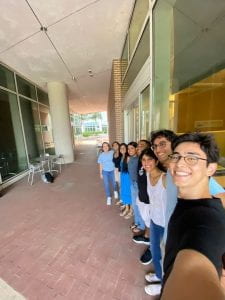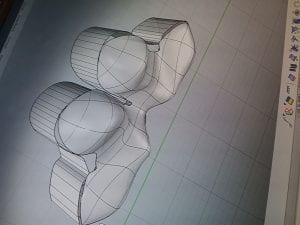Hey everyone! Thanks for tuning in for my second blog post!
I’ll start by saying, although it’s a bit cliche, it really is insane just how time flies. It feels like we all just met each other yesterday, yet here we are almost a month into the internship. Without a doubt I’ve learned a lot and am eager to come into work each day; it’s just hard to believe it’s gone by so quick!
A lot has happened over this span of two weeks, so I’ll try my best to capture many of the major points. Week 2 was largely an extension of the lessons we covered in Week 1. We did a lot of very useful and necessary reflection on our group activities, and really honed in the “why” of global health. This notion of truly understanding all components of a problem: from understanding its history to empathizing and respecting the populations affected, is so vital. Through these reflections, I’ve learned a lot about the field of global health, and a lot about myself. For that, I am so grateful!
At the end of Week 2, we also had quite a bit of fun! All of the Rice360 interns, alongside Dr. Taylor, and Dr. Nejad did an escape room together on the Thursday of that week and went out for a team dinner the next day. It was nice to see everyone working together and sharing some laughs one last time before some of the Rice360 interns left for Malawi and Tanzania. At the beginning of the following week, our colleagues took off for their respective destinations. We decided to get a group chat going so that we can keep in contact with our peers throughout their experiences abroad. I’m so excited to hear about everyone’s journeys this summer!
As far as progress on our project goes, we made strides in both understanding and beginning to design solutions for our Breast Cancer Training Model! Last week, we were still in the process of deciding which model we wanted to pursue. We did a lot of background research in defining which model best addressed the fundamental “need”; a model for practicing clinical breast examinations, or a model for practicing core needle biopsies. After much deliberation, consultations with many of our mentors, and finally getting to meet with the clinicians from MD Anderson (still crazy to me that we get to work with them!), we ultimately decided to clinical breast examination screening model. With now a clearly defined project goal in mind, and plenty of background research to boot, it was time to get started designing!
We’re in the process now of looking at materials and generating a 3D-printed mold for our model. The materials our model consists of are vital towards carrying the project forward, as one of the most fundamental needs the clinicians had expressed was to ensure the model “feels right”. To ensure that we are able to capture this, we are going to be meeting with the MD Anderson clinicians once a week! The “feel” of breast tissue is extremely difficult to express through numbers and data alone, so it is such a blessing that we are able to meet with experts in this subject to make sure our model is accurate to the best of our ability.
As for the 3D printing aspect, I can say with confidence that I’ve been learning far more than I ever thought I’d know about modeling software as a cognitive sciences major! We’ve been learning the ins and outs of a program called Rhino, and have developed a really low-fidelity prototype for how we think the model mold should end up looking in the long run.
Thank you all for sticking around for this week’s blog post. Hope to see you back here again next week!

